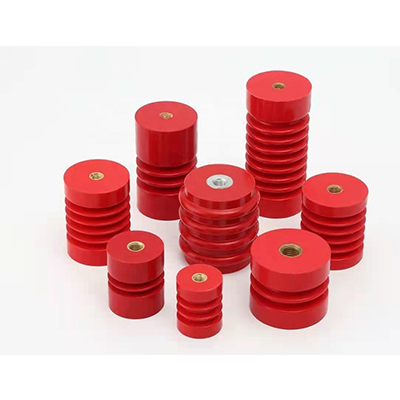Insulation Epoxy Resin
Product Description
With the aid of our advanced technology, we are competent in designing wide range of Insulation Epoxy Resin using premium quality insulation materials and components. Extensively used in electrical industry, this tube is well appreciated in the market for its features like chemical resistance and durability. Highly known for its sturdy construction and tear resistance and is highly known for its light weight. Accessible in different sizes and colors, we are Insulation Epoxy Resin in providing custom-made options to our prestigious clients.
Details of Insulation Epoxy Resin
Haripa India says, ‘There are limits to the level of details that we can go into, but basically the Insulation Epoxy Resin will be exposed to a liquid, based on commoditised chemicals that will penetrate the structure and break the epoxy into fragments. The various materials of the blade can be peeled from each other and can then be sent to individual recycling routes. The Insulation Epoxy Resin are further treated and are thereby converted into base-chemicals with virgin-grade quality that can be used for producing new epoxy. Insulation Epoxy Resin have been widely utilised since since their discovery. Our two type of Insulation Epoxy Resin is Ultra and Power Grip. Insulation Epoxy Resin has been used for a wide variety of applications, including but not limited to: chemically resistant pipes and pumps, pottery moulds, impellers, press and vacuum forming tools, patterns and core boxes, moulds for RIM, laminates for aircraft and automobile components, fibre wound products, and, most importantly, epoxy has been used to make relays, coils, and transformers ever since it was discovered in the 1950s that it provided good electrical insulation and was very resistant to chemicals.
Manufacturing Process:
Insulation Epoxy Resin is used in the production of our epoxy insulators at Haripa India due of its many desirable properties, including resistance to tracking, self-scoring, weathering, and repeated heating and cooling to 120°F and -40°F. Therefore, epoxy is ideal for use in the production of epoxy bushings and insulators because to its excellent electrical and mechanical qualities.
Insulation Epoxy Resin as well as Epoxy bushings also make it possible to cast with metal conductors and other metal inserts. Flanges, holes, and cross sections can all be moulded into epoxy insulators or epoxy bushings as part of the overall design.
Manufacturing Details
Insulation Epoxy Resin produced by Haripa India is made from silica under strictly regulated pressure and temperature. A tight binding between metal and epoxy pieces is ensured by pouring the silica mixture into aluminium moulds designed and manufactured by Haripa India. Due to the low viscosity of the mixture, detailed designs can be formed, something that is impossible with porcelain insulators. Parts are cleaned, inspected, and tested to ensure the best quality before being dispatched to clients after being oven-cured to achieve the desired mechanical qualities.
Advantages of Epoxy Insulators and Epoxy Bushings:
Epoxy Insulators vs. Polyester Insulators:
Insulation Epoxy Resin is stronger than polyester, wears better, and is more resistant to cracking when it is used to cover metal parts. Also, Insulation Epoxy Resin bushings and insulators are more resistant to chemicals than polyester bushings and insulators. Insulation Epoxy Resin made of epoxy resin also have high resistance and good dielectric strength. As a result, epoxy resin provides better electrical insulation than polyester. Insulation Epoxy Resin is better than polyester for making bushings as well as insulators because it doesn’t shrink much when it cures and sticks well to metal, wood, and other polar materials.
Epoxy vs. Silicon Rubber and EPR:
Insulation Epoxy Resin made of silicon rubber and EPR have a load-bearing fibreglass core in the middle and a polymer shell for electrical functions. Epoxy resin insulators, on the other hand, use the same material for both their mechanical as well as electrical functions. This reduces the number of connections, which is a very good thing.
Epoxy vs. Porcelain (Fired-Clay):
Insulation Epoxy Resin are stronger than porcelain insulators. Also, they weigh about half as much as a porcelain insulator of the same size. Insulation Epoxy Resin is also much easier to work with than porcelain because it is not brittle. This means that it can be moulded into complicated shapes and designs and can be made smaller than similar porcelain insulators and bushings.
Also, Insulation Epoxy Resin don’t track, cut themselves, or get damaged by weather, so they work well in all kinds of environments, even ones with a lot of pollution. Insulation Epoxy Resin has UV resistance qualities that is resistant to ultraviolet rays and can take more physical damage than porcelain, so it won’t break from a sudden change in temperature. The absence of metal end caps gives Insulation Epoxy Resin a higher distance of dry arcing than the porcelain ones. Insulation Epoxy Resin can also handle high-power arcs without getting damaged or needing to be “cleaned up” afterward. Still, what’s most important is that Insulation Epoxy Resin are cheaper to make and keep up than porcelain insulators.
Advantage
- Low viscosity
- High glossy
- Long operation time
- High mechanical strength

Catagories
- Chemical Resistant Epoxy Tank Manufacturer
- Powder Coating Epoxy Resin Manufacturer
- Construction Epoxy Resin Manufacturer
- Marble Joint Epoxy Resin Manufacturer
- Table Top Epoxy Manufacturer
- Grouting Epoxy Manufacturer
- Flooring Epoxy Resin Manufacturers
- Pipeline Coating Epoxy Manufacturers
- Tank Coating Epoxy
- Art Epoxy Resin Manufacturers
- Epoxy Resin for Railway Track Manufacturer
- Epoxy Resin for Ship Manufacturer
- Water Tank Epoxy
- Fibreglass Epoxy Resin Manufacturer
- Wind Turbine Epoxy Resin Manufacturer
- Insulation Epoxy Resin
- Marine Epoxy Manufacturer
- Jewelry Resin Manufacturer
- 3d Flooring Epoxy Resin Manufacturer
- Food Safe Epoxy Resin Manufacturer
- Cold Storage Epoxy Resin Manufacturer
- Epoxy Adhesive Manufacturer


